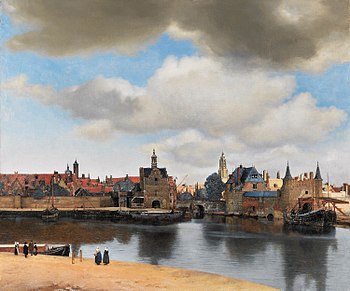
Back طلاء زيتي Arabic الوان زيت ARZ Алейныя фарбы Byelorussian Алейныя фарбы BE-X-OLD Маслени бои Bulgarian Uljane boje BS بۆیەی ڕۆنی CKB Olejová barva Czech Oliemaling Danish Ölfarbe German

Oil paint is a type of slow-drying paint that consists of particles of pigment suspended in a drying oil, commonly linseed oil. Oil paint also has practical advantages over other paints, mainly because it is waterproof.
The earliest surviving examples of oil paint have been found in Asia from as early as the 7th century AD, in examples of Buddhist paintings in Afghanistan. Oil-based paints made their way to Europe by the 12th century and were used for simple decoration, mostly on wood, but oil painting did not begin to be adopted as an artistic medium there until the early 15th century[citation needed]. Common modern applications of oil paint are in finishing and protection of wood in buildings and exposed metal structures such as ships and bridges. Its hard-wearing properties and luminous colors make it desirable for both interior and exterior use on wood and metal. Due to its slow-drying properties, it has recently been used in paint-on-glass animation. The thickness of the coat has considerable bearing on the time required for drying: thin coats of oil paint dry relatively quickly.
The viscosity of the paint may be modified by the addition of a solvent such as turpentine or white spirit, and varnish may be added to increase the glossiness of the dried oil paint film. The addition of oil or alkyd medium can also be used to modify the viscosity and drying time of oil paint.